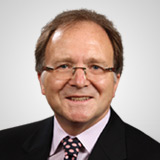When will gold turn? Many gold investors are frustrated with the metal’s lack of performance this year, and ask what it will take to make gold move up, notes Adrian Day, commodity sector expert and editor of Global Analyst.
First, we should put gold’s performance in context. In a year when the Federal Reserve and other global central banks are deliberately deflating asset prices, gold is down 7%, which is better than U.S. and global stocks, better than bonds, and better than most other assets including cryptocurrencies. Very little is up this year. In the face of a U.S. dollar that is up 18%, gold is holding up quite well.
In my view, gold will move up when one of two things happens: the dollar falls, or when more investors begin to realize that the Federal Reserve will be unable to quash inflation without causing a significant recession.
The dollar remains attractive given both that the U.S. economy is stronger than other leading global economies. And while China and Japan have been cooling on the dollar, for other investors, it remains the most attractive parking place; that seems unlikely to change any time soon.
What could change the dollars trajectory, however, is its very strength. High prices beget low prices; sentiment and prices are at extremes. More importantly, the high dollar exports U.S. inflation and is beginning to do real damage to other global economies, both to allies in Europe and to more fragile emerging markets.
As for investor expectations, investors seem to believe the Fed’s narrative. But this can change rapidly. We are not there yet, neither on the dollar nor on investor expectations –– nor indeed on a Fed pivot –– but the action in gold the last couple of weeks shows how short the market is, with most investors uninvested.
When conditions change, the move in gold could be quite explosive. Given the more that the gold stocks had in the last 10 days, we will not chase prices but wait for pullbacks to add to positions.
Mark Bristow — CEO of Barrick Gold (GOLD) — said Nevada remains the area with best opportunity to grow, which Reko Diq in Pakistan could last a century or more. In a wide-ranging discussion over lunch in Denver with CEO Mark Bristow reviewed all the company’s projects and looked at the way the company invests.
The company operates six Tier 1 assets globally, with more in the pipelines. Reko Diq, Bristow said, is one of the world’s largest copper/gold projects, but Barrick is not “risking the farm” on its development.
The first phase will include $1 billion in equity from the company, while phase 2 will be self-funding. In discussing the extension to Pueblo Viejo in the Dominican Republic, now under way, Bristow noted that as recently as 2019, it had been scheduled to close. He gave this as an example of getting the most out of the company’s projects.
It is continuing to explore increasing resources at the 17- year old Veladero mine in Argentina. The company is doing work to advance Pascua-Lama, which has had a long troubled history with permitting; the mine straddles the Argentine-Chilean border in the high Andes.
The company has been clear that it would like to expand in Canada, but having missed out on a few high-profile acquisitions which did not meet its filers — or for which it was not prepared to pay up — it wants to expand its exploration activities.
Barrick noted, “The way we invest, the gold price is irrelevant”, saying that the costs of a potential mine were more important in evaluating a projects. It invests for more than a single cycle. Barrick currently uses a $1,200 gold price for evaluating projects.
I asked Dr. Bristow if the company was too dependent on a single individual, as he is not only the face of the company but usually takes the lead — and more — in presentations and conference call. Sometimes he is the only corporate officer who talks.
There is no gainsaying his tremendous grasp of every detail of the sprawling global enterprise. He answered my question extensively, making two main points. First, many of the group leaders are under 45 years old, and group leaders, he said, have “real decision-making authority”.
Second, an executive committee of 30-odd people, meets every week, and members of that committee “see the whole business”. So though no news came out of the meeting, it was a wide-ranging and in-depth look at the company, with new insights. In my view, Barrick remains a buy.





















